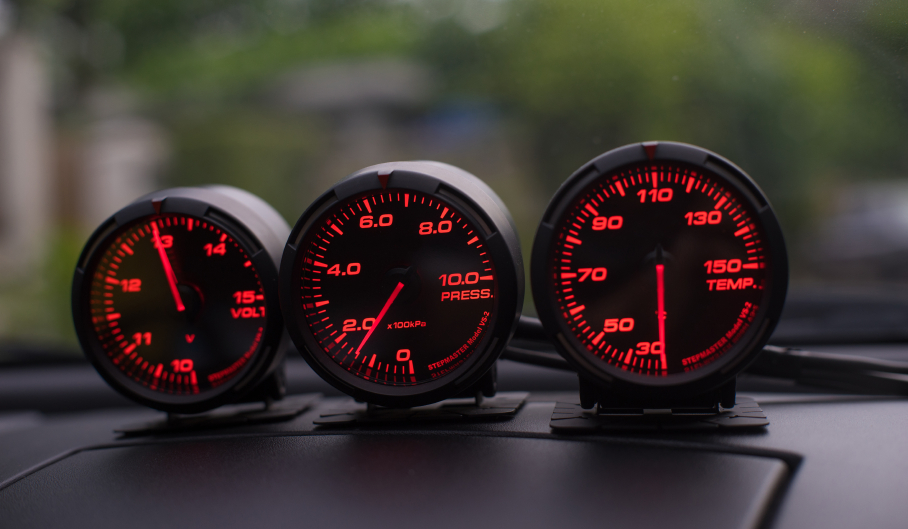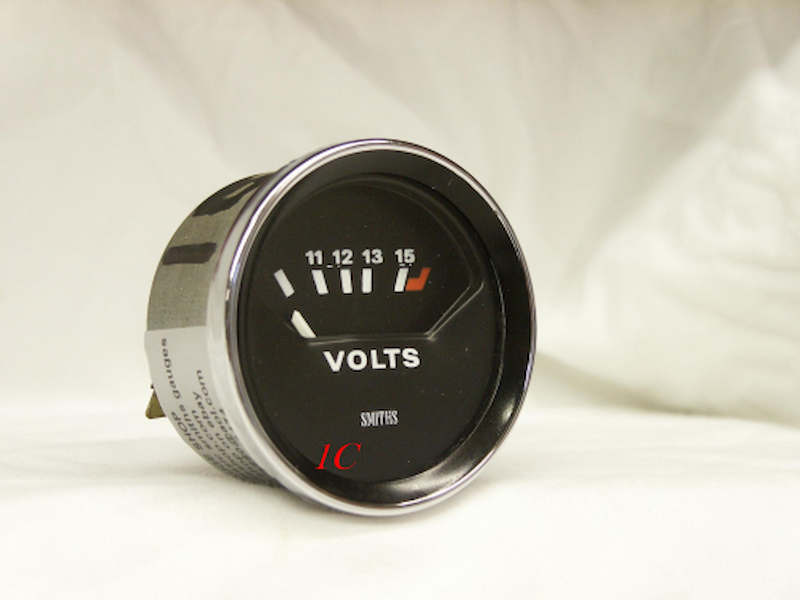The push towards electrification and digitisation in cars can not only be felt under the bonnet but inside the cabin as well. Cabin design ethos has completely changed from just a few years ago, and now digital screens make up most of the landscape. Physical buttons for basic controls are becoming a rarity, and simple gauges that inform of the basic engine and vehicle performance have all but disappeared.
Accessing elementary info about the vehicle’s vitals shouldn’t be this frustrating. While not all of us need to know the boost levels in the turbo, or the exact air-to-fuel ratio, in modified and performance cars, data like this certainly has its benefits. You’ll be well aware of how the vehicle is performing at all times and any abrupt changes or different readouts from the auto gauges can signal that something isn’t right. The real-time info from different gauges also lets you get a feel of the upper limits of your car. You know how far it can be pushed, without going overboard.
Aftermarket Car Gauges

Oil Pressure and Temperature Gauges
Oil pressure gauges monitor the pressure and amount of oil circulating in the engine. This is what maintains a healthy engine and extends longevity. High or low readings deviating from normal figures (between 25and 65 psi for most cars) can mean clogged oil filters, oil that is contaminated, degrading and changed viscosity, damage to oil pumps and oil sumps, blocked oil passages, blown gaskets… the list goes on. Eventually, the loss of lubrication will lead to excess friction of grinding metal parts, overheating, and complete engine failure. That’s why an oil pressure gauge serves as an early warning signal before repairs get costly.
Related are oil temperature gauges. Oil has the secondary purpose of engine cooling and any abnormal oil temperature readings (above 120°C) mean degrading oil that can’t do its main job, lubricating engine parts. An oil temperature gauge can also inform when the engine has reached optimal working temperature ranges (usually 90 to 105°C) for most cars as this is where performance is at its best.
Boost Gauges
Any vehicle with forced induction will benefit from a boost gauge. This displays the boost pressure generated by the turbo or supercharger. In cars that are modified with aftermarket turbos making more boost, the gauge allows drivers to balance performance while reducing excessive wear. Gauges can throw up negative readings, meaning the turbo is yet to kick in, or boost levels of up to 35 psi (or 2.4 bar). Each vehicle will have predefined normal boost ranges, generally between 15 and 20 psi. Some auto gauges also have accompanying audio and/or visual alerts when you’re overstressing the engine.
EGT – Exhaust Gas Temperature Gauges
Monitoring how hot are the gases coming out of the car is the task of an Exhaust Gas Temperature gauge. This can also tell you the efficiency of combustion, and how gases are handled after exiting the exhaust manifold. An EGT gauge also informs of the fuel-to-air ratios, and variations in readings can mean the mixture is too rich (with more fuel than needed) or too lean with the engine not getting the right dose of fuel.
Too little air getting in the engine will be a sign of airflow restriction, clogged filters, exhaust issues, and more. If EGT readings remain high for prolonged periods, there’s the likelihood of engine damage, particularly to engines fitted with turbos. Thar’s why EGT gauges are often paired with boost gauges – you’ll know how hard the turbo is working in different driving conditions, and whether the spent exhaust gases are cooled to the right temperature. Related, and with similar functions are air-fuel ratio gauges.
Volt Gauges

Volt gauges or volt meters are used to measure voltage in both starter and secondary batteries, a combination that’s seen in many vehicles prepped for off-road or camping use. The basic function is to inform drivers whether the battery is charging with the engine running. Readings between 12 and 12.6 volts mean the battery is topping up and near full charge. A voltmeter can also inform of any issues with related parts, like alternators and starters. Those automotive gauges monitoring secondary batteries can provide invaluable data as to the efficiency of chargers and solar panels, as well as the system as a whole.
Fuel Pressure Gauges
These are used to determine whether there are any issues with fuel delivery. For performance cars and any vehicle fitted with either a turbo or supercharger, a fuel pressure gauge can inform of defective fuel injectors, fuel pumps, or clogged fuel filters. These too are often coupled with boost gauges, as the amount of fuel coming in should be proportionate to the level of boost from the turbo.
Other gauges monitor the pressure and temperature of oil in auto transmissions and the coolant temperature. Too high readings can be signs that there are gearing issues, leaking oil or coolant, blown gaskets, issues with the cooling system, and more.
Mechanical or Electronic?

Mechanical gauges need a physical link between monitored engine systems and the gauge. This means lines, cables, and wires all come into the cabin as well. Not an ideal solution for instance for oil pressure gauges as any damage or ruptures can cause oil spurting in the car. Electronic gauges are generally regarded as a safer option in this respect, as they rely solely on sensors to relay the collected data to the gauge. Both types will require wiring for readings to be visible at night.
In terms of accuracy and legibility, both electronic and mechanical gauges relay real-time engine changes, but some drivers may prefer the 270°-degree needle sweep of mechanical gauges as opposed to the 90- or 180°-degree needles in electronic variants.



